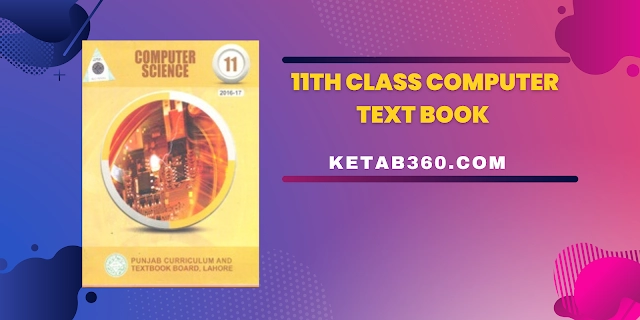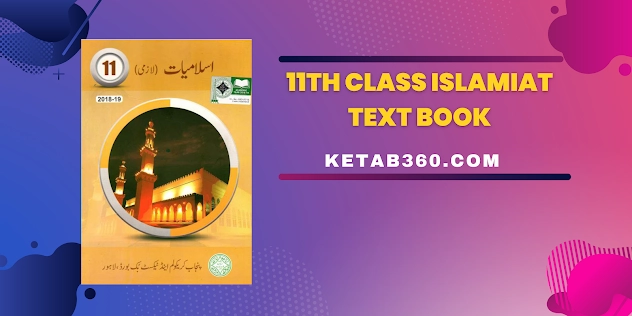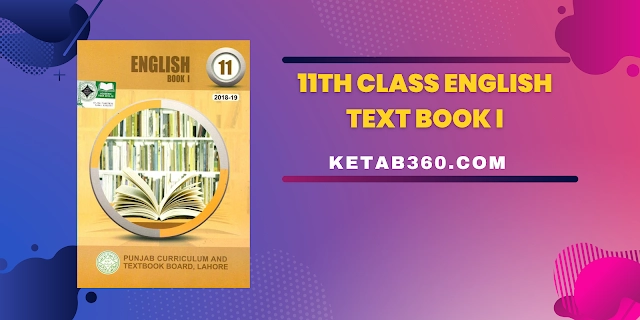11th Class Computer Book By Punjab Board
This is the inaugural edition of the 11th class Computer Science book, jointly authored by Mirza Mubashar Baig, Miss Shaheena Naz, Mr. Asif Ali Magsi, and edited by S. Zulqarnain Jeffery, under the guidance of subject specialist Mr. Jahanzaib Khan.
This Punjab Text Book offers an introduction to the core concepts of computer science, covering a range of topics in 10 chapters. By exploring the dynamic nature of the subject, it equips students with the necessary knowledge to identify their areas of interest and potential specializations for further studies based on their individual aptitudes.
What does the book contain?
Commencing with an exploration of hardware and software in electronic systems, the book progresses to cover the fundamentals of networking—an expansive field. The third chapter delves into the essentials of telecommunication, while the subsequent two chapters concentrate on computer utilization and architecture. Chapter 6 introduces the fundamentals of cybersecurity, followed by chapters 7, 8, and 9, which delve into the Windows Operating System and two of its application software. Finally, the book concludes with an introduction to the Internet.
Chapter No. 1 : Basics Of Information Technology
This chapter lays the foundation of computer fundamentals, beginning with an exploration of contemporary information technology. It covers a wide range of topics, including a thorough understanding of hardware and software, their architecture, working principles, and different types. Additionally, the chapter offers a concise overview of data storage in computer memory.
Chapter No. 2 : Information Networks
This chapter delves into the captivating realm of computer networks, one of the pivotal and captivating concepts in computer science. It establishes the fundamental principles of connectivity and communication. Commencing with the foundational medium of communication, the internet, the chapter progressively explores the various components of a network. It encompasses significant networking concepts such as LAN, WAN, and MAN, as well as different network standards, models, and topologies widely implemented in the industry, offering students an industrial perspective on the subject matter.
Chapter No. 3 : Data Communications
This chapter covers the fundamental aspects of data transfer between two devices via electrical transmission systems. It initiates by addressing the essential components involved in device communication. The chapter then explores the types of data that can be transmitted and the necessary conversion processes for effective transmission. Additionally, it highlights standard data encoding schemes that form the foundation of cybersecurity measures.
Chapter No. 4 : Applications & Uses Of Computers
This straightforward chapter outlines the significant role computers have played in simplifying our lives by highlighting their various applications and uses. It explores how computers have transformed different sectors, including business, offices, banks, medicine, education, and more. It emphasizes the revolutionary impact of computers on electronic marketing, reshaping the way commerce is conducted.
Chapter No. 5 : Computer Architecture
This chapter acts as a foundational step in comprehending the architecture of a computer, providing an overview of its structure and fundamental operations. It explores different types of computer memories, delves into the structure and functioning of processors, and elucidates the flow of instructions within the computer system. Additionally, it discusses the format of instructions that serve as the basis for computer operations.
Chapter No. 6 : Security, Copyright & The Law
This chapter extensively covers the crucial aspects of data and computer system security. In today’s interconnected world, safeguarding data has become of utmost importance. The chapter begins by highlighting potential threats posed by viruses, including their causes, various types, and preventive measures. It then shifts its focus to data security, discussing security breaches, threats, and violations. Finally, it concludes by providing insights into significant cybersecurity acts that play a vital role in ensuring digital security.
Chapter No. 7 : Windows Operating System
This chapter elucidates the user-computer interaction facilitated by an operating system. It covers two types of operating systems in detail. Additionally, it serves as a comprehensive guide to acquaint oneself with the Windows operating system, shedding light on its distinctive features. The chapter further provides an explanation of essential Windows utilities, such as disk and file management, to enhance user understanding and proficiency.
Chapter No. 8 : Word Processing
This chapter offers a comprehensive guide to an application software dedicated solely to word processing, presenting the information in a clear and concise manner. Given that word processing is the primary and widely used function of computers for creating documents, emails, and more, this chapter establishes a solid understanding of word processing concepts. It provides a brief yet insightful overview of the functions and features of various word processors, ensuring that students become well-versed in using this software.
Chapter No. 9 : Spread Sheet
Similar to the previous chapter, this section focuses on a vital application software called “Spreadsheet.” It explores the efficient handling of large sets of numerical data using the software’sfunctions, presenting a straightforward approach for students to comprehend its various features and their practical applications. By delving into the capabilities of spreadsheets, this chapter aims to enhance students’ understanding and proficiency in effectively working with numerical data.
Chapter No. 10 : Fundamentals Of The Internet
This chapter serves as an informative response to the question, “How does the internet work?” by providing an overview of its fundamental components. It explores the addressing schemes utilized on the internet and elucidates web browsing, encompassing concepts such as the World Wide Web (www), Uniform Resource Locator (URL), and search engines. Additionally, it provides insights into email communication and newsgroups, offering valuable information for a comprehensive understanding of internet operations.
Tips for Effective Study of 11th Grade Computer Text Book in PDF Format.
Studying Computer Text Book effectively in the 11th grade can be accomplished even when using PDFs. Consider the following strategies:
To ensure a focused study session while engaging with the Computer Punjab Text Book , consider the following suggestions:
- Disconnect from the internet: Disable internet connectivity while studying to minimize distractions and maintain concentration on the material.
- Keep pen and paper handy: Have a pen and paper nearby to jot down important points, key concepts, or any thoughts that arise during the study session. This aids in better retention and organization of information.
- Utilize the internet selectively: Turn on the internet only when necessary, such as when you require additional information on specific topics. Use it as a supplementary resource rather than a constant distraction.
- Capture screenshots: If you come across confusing sections or passages in the book, take screenshots to share them with your teacher or classmates for clarification and discussion. This promotes collaborative learning and helps in resolving doubts.
- Prioritize eye safety: Take care of your eyes while studying by wearing appropriate protective gear, such as glasses or utilizing screen filters. This ensures your eyes remain safe and minimizes strain during extended study sessions.
By implementing these recommendations, you can enhance your focus, note important points, utilize the internet judiciously, collaborate with others, and safeguard your eyes while studying the Computer Text Book.






